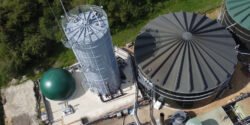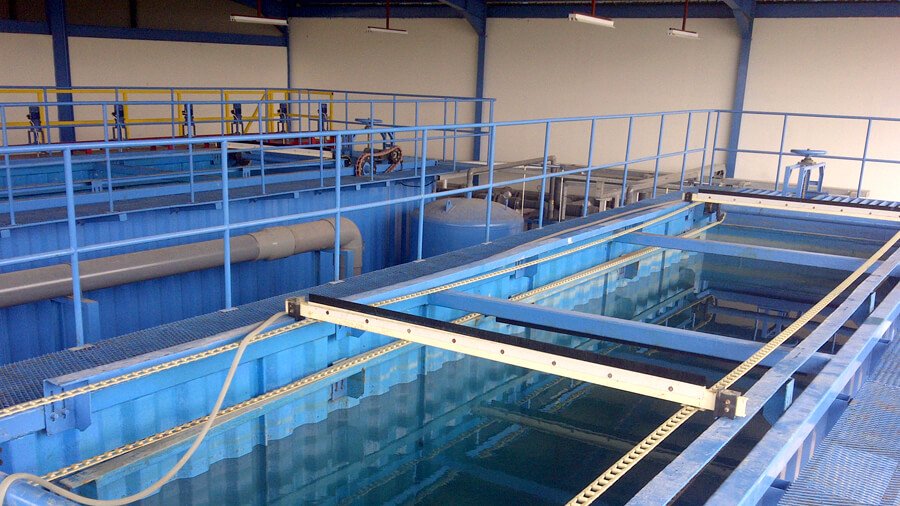
Ceramic Membranes For Water Treatment

The Evolution of Water Treatment: Unveiling the Potential of Ceramic Membranes
Water scarcity, pollution, and the increasing global demand for clean water have driven scientific and technological advancements in water treatment. Ceramic membranes have emerged as a promising technology in the quest for improved water purification methods. This comprehensive article explores the advantages, applications, challenges, and future prospects of ceramic membranes in water treatment, delving into their unique properties, operational mechanisms, and the role they play in ensuring access to clean water for diverse sectors.
Introduction to Ceramic Membranes
Ceramic membranes, made from inorganic materials like alumina, zirconia, titania, or silicon carbide, differ significantly from traditional polymeric membranes. They are formed into porous structures that allow selective filtration based on size exclusion, charge interactions, or other specific mechanisms. Due to their robust mechanical properties, chemical stability, and resistance to high temperatures and harsh environments, ceramic membranes are increasingly being incorporated into various water treatment processes.
Advantages of Ceramic Membranes
-
- Robustness and Durability: One of the primary reasons for the growing interest in ceramic membranes is their exceptional physical robustness. Unlike polymeric membranes, ceramic membranes can withstand high-pressure differentials, abrasive substances, and extreme temperatures, making them suitable for demanding industrial applications.
-
- Chemical Resistance: Ceramic membranes exhibit remarkable resistance to chemical attack. They can handle aggressive solvents, strong acids, and alkaline conditions without degradation, expanding their applicability in treating industrial and hazardous wastewater streams.
-
- Thermal Stability: The thermal stability of ceramic membranes allows for steam sterilization, enhancing their use in processes where high temperatures are involved. This property ensures long-term operational stability and reduces the risk of membrane fouling.
-
- Long Lifespan: Due to their robustness and chemical and thermal resistances, ceramic membranes tend to have a longer operational lifespan compared to polymeric membranes. This translates to lower replacement frequencies and maintenance costs.
-
- Flexibility in Pore Size: Ceramic membranes can be engineered with a wide range of pore sizes, from microfiltration (MF, typically 0.1-10 microns) and ultrafiltration (UF, 0.01-0.1 microns) to nanofiltration (NF, 1-10 nanometers). This flexibility allows for tailored solutions based on specific water treatment needs.
Mechanisms of Filtration
Ceramic membranes primarily operate through size exclusion but can also leverage other mechanisms such as adsorption, charge repulsion, and hydrophilic/hydrophobic interactions. The choice of mechanism depends on the application and target contaminants.
-
- Microfiltration (MF): This process removes suspended solids, microorganisms, and larger particles. Applications include pre-treatment for reverse osmosis and wastewater clarification.
-
- Ultrafiltration (UF): UF targets smaller particles, viruses, colloids, and macromolecules. It’s widely used for surface water purification, production of drinking water, and pre-treatment stages in desalination processes.
-
- Nanofiltration (NF): This process filters dissolved organic matter, multivalent ions, and small-molecular-weight compounds. NF membranes are suitable for softening water, removing specific contaminants like pesticides, and desalinating brackish water.
Applications in Water Treatment
-
- Drinking Water Purification: Ceramic membranes have gained popularity in municipal water treatment plants for producing high-quality drinking water. Their ability to remove pathogens, turbidity, and organic contaminants ensures safe and potable water.
-
- Industrial Wastewater Treatment: Industries generate diverse wastewater streams laden with toxic chemicals, heavy metals, and other harmful substances. Ceramic membranes offer robust and reliable solutions for treating industrial effluents, ensuring compliance with stringent environmental regulations.
-
- Desalination: As freshwater resources dwindle, desalination has become a critical solution for coastal and arid regions. Ceramic membranes play an essential role in pre-treating seawater and extending the lifespan of reverse osmosis membranes by removing suspended solids, bacteria, and other impurities.
-
- Food and Beverage Industry: The food and beverage industry requires high-purity water for various processes. Ceramic membranes ensure the removal of microorganisms and particles, maintaining product quality and safety.
-
- Pharmaceutical and Biotechnology: These sectors demand stringent water quality standards for production processes. Ceramic membranes provide sterile filtration, removing bacteria, viruses, and endotoxins from process water.
-
- Environmental Remediation: In environmental clean-up operations, ceramic membranes are employed to treat contaminated groundwater, river water, and industrial sites, providing effective solutions for rehabilitating polluted ecosystems.
Challenges and Limitations
While ceramic membranes offer numerous advantages, they also face certain challenges that need to be addressed for wider adoption:
-
- High Initial Cost: The manufacturing process of ceramic membranes is typically more expensive than that of polymeric membranes. This increased cost can be a deterrent for many applications, despite the potential for long-term savings through extended lifespan and reduced maintenance.
-
- Membrane Fouling: Fouling is a common issue in membrane filtration, where contaminants accumulate on the membrane surface, leading to reduced performance. While ceramic membranes are less prone to fouling compared to polymeric ones, they are not immune. Developing effective cleaning strategies and fouling-resistant coatings is critical.
-
- Complex Manufacturing process: Fabricating ceramic membranes involves high temperatures and controlled environments, making the manufacturing process complex and energy-intensive. Innovations in production techniques are needed to streamline manufacturing and reduce costs.
-
- Brittleness: Despite their robustness, ceramic membranes are inherently brittle and can fracture under mechanical stress or impact. Improving the mechanical toughness and resilience of ceramic materials is essential to mitigate this limitation.
-
- Limited Availability of Raw Materials: Some ceramic membrane materials rely on high-purity raw materials, which may have limited availability or face supply chain constraints. Exploring alternative materials and sustainable sourcing methods is crucial for scalability.
Innovations and Future Prospects
The future of ceramic membranes in water treatment looks promising, driven by ongoing research and development efforts aimed at addressing the current challenges and expanding their applications. Key trends and innovations include:
-
- Hybrid Membrane Systems: Integrating ceramic membranes with other filtration technologies such as activated carbon, ion exchange, or advanced oxidation processes can enhance overall effectiveness and efficiency. Hybrid systems leverage the strengths of each technology to achieve superior water quality.
-
- Novel Material Development: Researchers are exploring new ceramic materials and composites with enhanced properties. For instance, incorporating nanoparticles, graphene, or bio-inspired structures can lead to membranes with improved fouling resistance, higher permeability, and better selectivity.
-
- 3D Printing and Additive Manufacturing: Advances in 3D printing and additive manufacturing techniques hold the potential to revolutionize the production of ceramic membranes. These technologies enable precise control over membrane structure, pore size distribution, and geometry, paving the way for customized and efficient filtration solutions.
-
- Smart Membranes: The development of smart ceramic membranes that respond to environmental stimuli, such as pH changes, temperature variations, or the presence of specific contaminants, offers exciting possibilities. Smart membranes can optimize filtration performance and adapt to varying conditions, enhancing their versatility.
-
- Scaling Up Production: Efforts to scale up the production of ceramic membranes while reducing manufacturing costs are underway. Streamlined production methods, increased automation, and optimized supply chains can make ceramic membranes more accessible to a broader range of applications.
-
- Environmental Sustainability: As sustainability becomes a focal point in water treatment, there is growing interest in developing eco-friendly and reusable ceramic membranes. Sustainable production practices, recycling strategies, and minimizing the environmental impact of membrane disposal are critical areas of research.
Conclusion
Ceramic membranes have emerged as a transformative technology in the field of water treatment, offering unparalleled robustness, chemical resistance, and thermal stability. Their applications span across various sectors, from municipal water purification and industrial wastewater treatment to desalination, food and beverage production, and environmental remediation.
While challenges such as high initial costs, fouling, and brittleness persist, ongoing innovations and research efforts are paving the way for improved ceramic membrane technologies. The integration of hybrid systems, development of novel materials, advancements in manufacturing techniques, and the rise of smart and sustainable membranes hold tremendous promise for the future.
As the global demand for clean water continues to rise, ceramic membranes are poised to play a pivotal role in addressing water scarcity, pollution, and environmental sustainability. With collaborative efforts from researchers, industries, and policymakers, ceramic membranes can contribute to a cleaner, healthier, and more resilient world, ensuring access to safe and high-quality water for generations to come.


